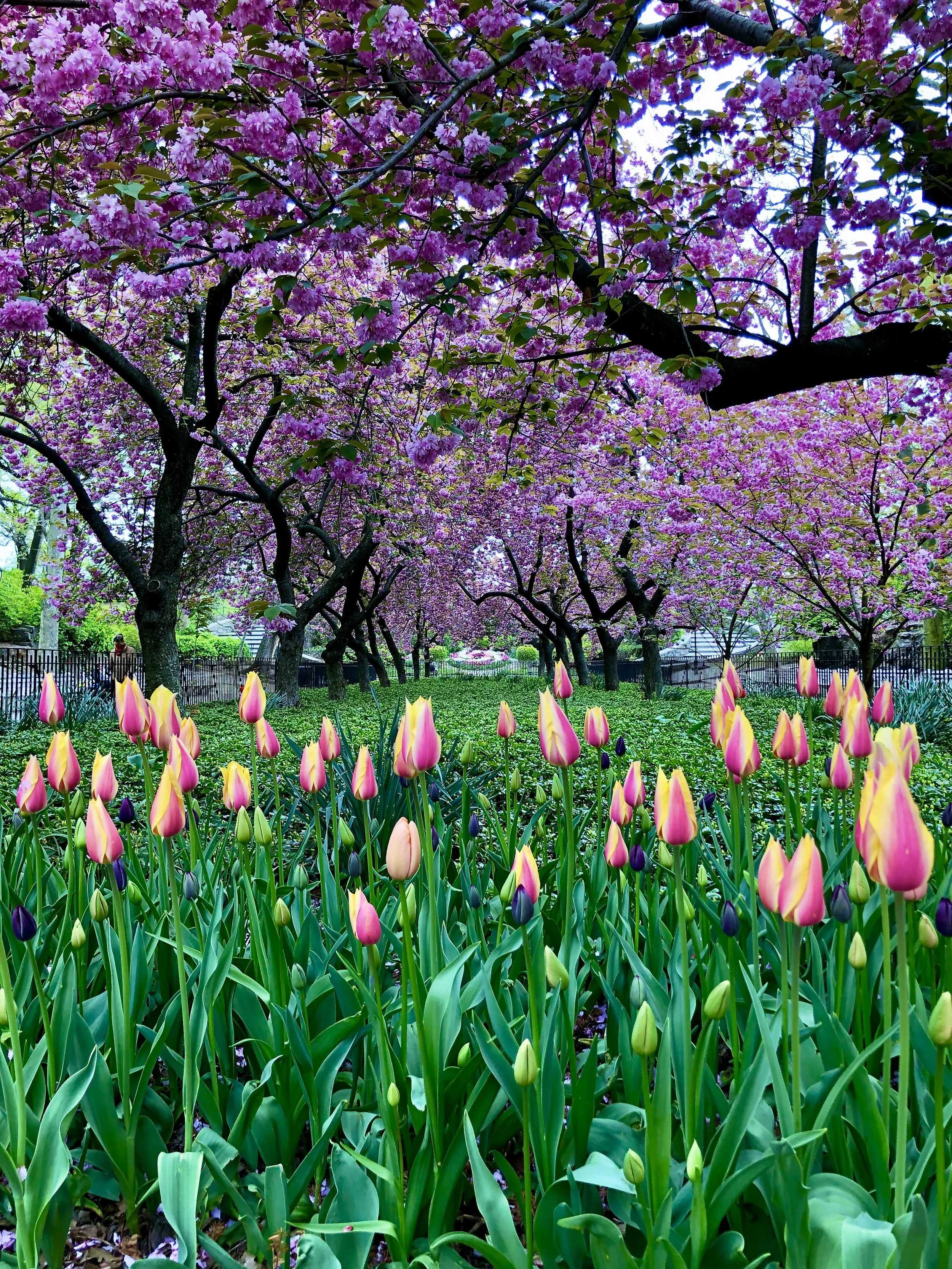REVIEW: Schoenberg's Gargantuan Gurre-Lieder at Carnegie Hall
Above, Schoenberg’s self-portrait.
March 22, 2024
Arnold Schoenberg’s Gurre-Lieder, one of Romanticism’s grandest swan songs, received a rare full performance at Carnegie Hall on Friday night, in time for the composer’s 150th centennial. Leon Botstein conducted the American Symphony Orchestra — a bountiful roster of personnel on hand to flesh out the score’s 150 instrumentalists — and the Bard Festival Chorale, under the direction of James Bagwell, along with six operatic soloists, in this gargantuan cantata that premiered in 1913 Vienna.
If the name Schoenberg brings a Pavlovian wince — a brush with the results of his innovative, atonal twelve-tone technique having left a bitter taste in your mouth — then you would not have been prepared for the plush warmth of the opening Orchestral Prelude. This game-changing composer spanned two epochs; Gurre-Lieder is a monument to his beginnings. Like Mahler and Strauss, he stretched late-Romanticism to its extremes, wrenching every drop from Western musical tropes until the music overgrew and sprawled, about to spill out of its container of traditional tonal harmony.
American Symphony Orchestra performs Gurre-Lieder in Carnegie Hall. Photo by Matt Dine.
A sizable chunk of Local 802’s membership was employed to realize Schoenberg’s two-plus hours of Wagner-on-steroids orchestration. Ten horns, four of whom double on the treacherous Wagner-tuba (sort of a euphonium with rotary valves); four (!) harps; two contrabassoons; bass trumpet; contrabass trombone. Some of these instruments don’t get played very often, let alone as expertly as tonight.
The subject matter — the medieval Danish King Waldemar’s love triangle and the tragic death of his mistress, Tove — plays second fiddle to the canvas on which it is painted, more a vehicle for symbolism, tone-painting, and dramatic, athletic singing. The only real drama, after all, is in the music — the text here is all tell, no show.
Soprano Felicia Moore and the ASO at Carnegie Hall. Photo by Matt Dine.
Soprano Felicia Moore, singing the role of Tove in Part I, soared above the orchestra with a luxuriant squillo. The dense orchestral backdrop to Waldemar’s moody soliloquies obscured the subtleties in Dominic Armstrong’s lean tenor. He managed smartly, using crisp consonants to provide rhythmic definition. Part I culminates with the “Voice of the Wood-Dove,” specularly sung by mezzo-soprano Krysty Swann.
Brenton Ryan, with a wry wink and a bright, agile instrument, made an off-beat entrance from the back of the house as Klaus the Jester. And the three men’s choruses (“Waldemar’s Mannen”) heralded Part III, The Wild Hunt, with muscular cries of “Holla!” As the narrator (“Sprecher”), Carson Wittmoser made Schoenberg’s novel use of sprechstimme emerge organically. When the large eight-part chorus finally utters a sound, it is in the work’s climactic depiction of the sunrise, a brilliant C major.
The auditorium’s acoustics were almost overwhelmed, if such a thing is possible, by the sheer quantity of forces. Those forces were spread like peanut butter across the stage. I wished they had been arranged more vertically, with the orchestra seated on risers — as the Vienna Philharmonic was recently on the same stage — so that the winds could be better featured.
Botstein’s style on the podium is economic and businesslike — aloof, even. A more ebullient showman on the podium might have enhanced the audience’s connection with Schoenberg’s musical journey. But, perhaps it is in Botstein’s wisdom that he allowed the score to simply unfold, rather than gild the lily. In an age characterized by dubious leadership in many of life’s arenas, the achievement of Botstein in organizing and shaping this ambitious performance is to be celebrated.
Brenton Ryan, tenor, with the American Symphony Orchestra. Photo by Matt Dine.








